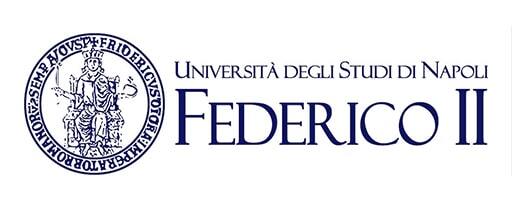UNIVERSITY OF NAPLES FEDERICO II, ITALY
Campus “Division of Cardiology, Federico II University”, Naples: located in the upper part of the city, it belongs to the Academic Department of Advanced Biomedical Science. The Department hosts different courses of the Master Degree in Medicine and Surgery (6 years duration), as well as 9 Specialist Degrees (3 years duration) and 11 Residency Schools (4 to 5 years duration).
The Division has several areas of expertise, ranging from molecular and cell biology to translational and clinical research in the fields of coronary and peripheral artery disease, cardiomyopathies, arrhythmias, platelet biology, arterial and renal hypertension and structural heart disease.
- EDUCATIONAL AND SCIENTIFIC STRUCTURES (Departments, Laboratories, Centres, etc.) Within the Department of Advanced Biomedical Sciences, the Division of Cardiology has the following research laboratories:
Building no. 2 (University Headquarters - Via Pansini no. 5, Naples): a) Laboratory of Histology; B)
Laboratory of Experimental Surgery; c) Laboratory of Molecular Biology; d) Laboratory for Radioisotopic Assays; e) Laboratory of Molecular Physiology: f) Laboratory of Physiology of Isolated Organs; g) Laboratory of Cell Biology; h) Stabularium for small animals.
Building no. 20 (University Campus - Via Pansini no. 5, Naples): a) Laboratory of Toxicology; B)
Laboratory of Histology and Regenerative Medicine.
Building No. 6 (University Campus - Via Pansini No. 5, Naples): a) Laser Laboratory in Biomedical Application.
- OTHER RESOURCES (e.g. libraries, equipment, facilities, databases, etc.):
1) Library (Building no. 20, Campus Universitario - Via Pansini n. 5, Naples); 2) Library (Building no. 20 (Campus Universitario - Via Pansini n. 5, Naples); 3) Full access to 117 electronic cardiology journals within the Academic Centre for Electronic Libraries of the University Federico II of Naples; 4) The electronic database collecting more than 10000 hypertensive patients within the "Campania Salute" project.
Campus “Clinica Montevergine”, Mercogliano: located 55 km from Naples, Clinica Montevergine is a renowned private hospital specialized in diagnosis and treatment of all adult cardiac diseases, with particular attention to innovation and technology in the fields of interventional cardiology, electrophysiology and cardiac surgery. The Clinic also promotes cardiovascular research, in particular cardio-oncology, stem cells, implementation of coronary and valve percutaneous devices, cardiac resynchronization therapy.
UNIVERSITY OF CATANZARO MAGNA GRAECIA
- EDUCATIONAL AND SCIENTIFIC STRUCTURES (Departments, Laboratories, Centres etc.)
Within the Department of Medical and Surgical Sciences, the Division of Cardiology has the following research laboratories:
1) Cardiovascular Research Centre (Ed. Biosciences, Level 7)
2) Cardiology Laboratory (Biosciences Ed., Level 7)
3) Stabularium for small animals (Biosciences Ed., Level 9)
4) Multimedia room for Teaching and Training (Ed. A, Level 2)
- OTHER RESOURCES (e.g. libraries, equipment, facilities, databases, etc.)
1) Library (Ed. A Liv 3)
2) Instrumentation for molecular biology, cell biology and basic biochemistry, cell cultures, cytofluorimetry and fluorescence microscopy, Q-PCR, analysis of proliferation, apoptosis and transcriptional activity based on bio- and chemoluminescence determination. (Ed. Biosciences)
UNIVERSITY OF CALABRIA
- EDUCATIONAL AND SCIENTIFIC FACILITIES (Departments, Laboratories, Centres, etc.)
1) Laboratory of Cellular and Molecular Cardiac Pathophysiology, Cube 6 c ground floor, Via Ponte Pietro Bucci, Rende (CS), Operating Unit of the National Institute for Cardiovascular Research (INRC; Bologna). The structure is composed as follows:
1)Organ Perfusion Section, cube 6c ground and second floor; 2) Molecular Biology Section (primary and secondary human and murine cultures; molecular techniques such as Western blot, qPCR, gene silencing, immunoprecipitation and ChIP; Immunometry for the study of proteins, genes and enzymes, and sprottroscopy for metabolomic and lipidomic studies); 3) Anatomy section (cytological and histological techniques) and is supported by the Scanning Electron Microscopy (SEM) and Transmission Electron Microscopy (TEM) facility.
- OTHER RESOURCES (e.g. libraries, equipment, facilities, databases, etc.)
1) Area-Technical-Scientific Library, Unical; Piazza Chiodo, Block 2, Arcavacata di Rende (CS); Library of the Department of Pharmacy and Nutrition and Health Sciences (multipurpose building, Arcavacata di Rende Campus (CS); 3) Full access to Databases: protein sequence database; protein interaction database; DNA and protein sequence database; protein domain database.4 ) Software specifically relevant to the fields of research envisaged, such as Graphpad for statistical analysis of biological data, PowerLab data acquisition system for analysis of physiological parameters of organ perfusion, ImageJ 1.6 software (NIH) for digitised analysis of images in the biological field

